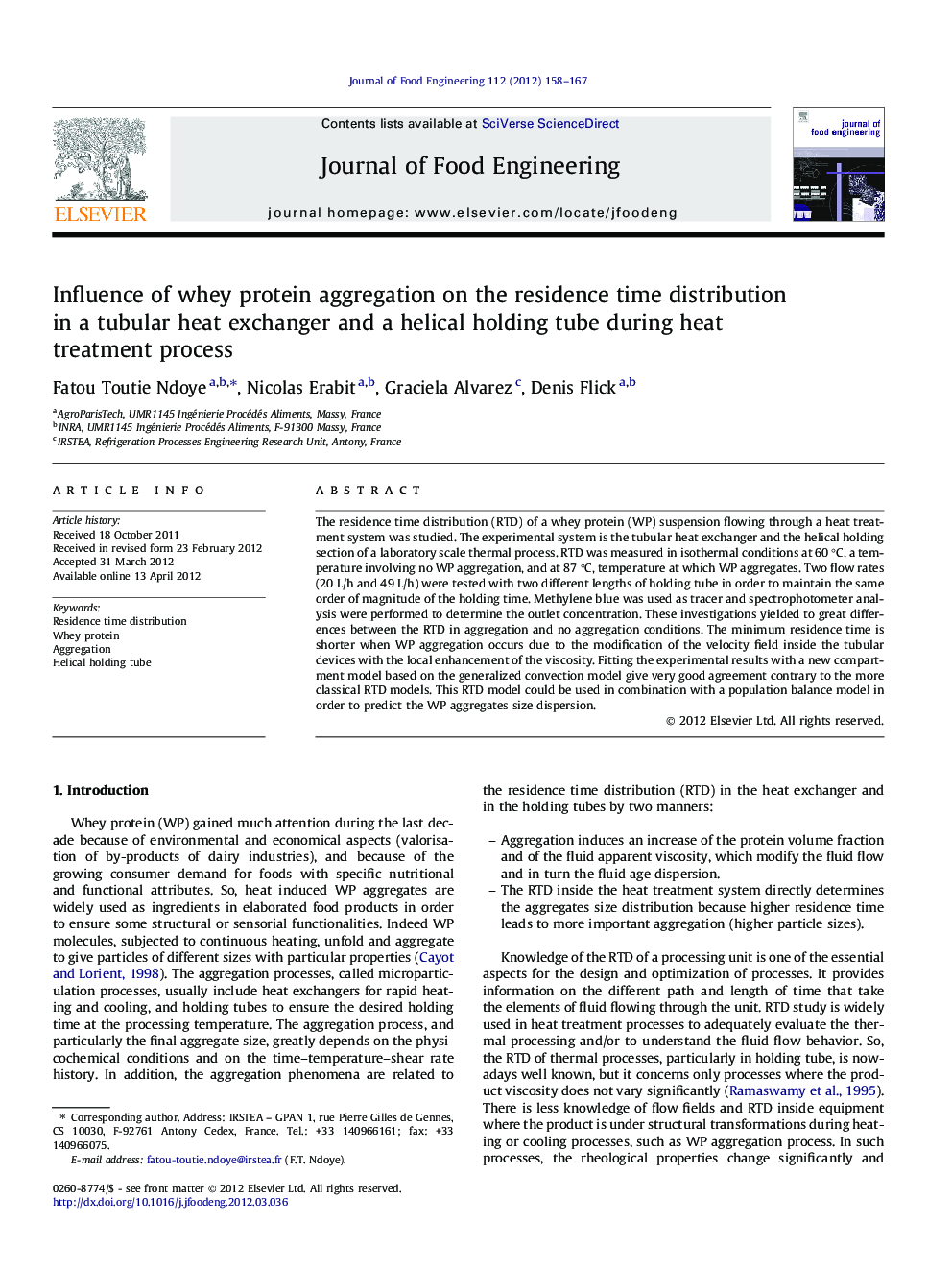| Article ID | Journal | Published Year | Pages | File Type |
|---|---|---|---|---|
| 223655 | Journal of Food Engineering | 2012 | 10 Pages |
The residence time distribution (RTD) of a whey protein (WP) suspension flowing through a heat treatment system was studied. The experimental system is the tubular heat exchanger and the helical holding section of a laboratory scale thermal process. RTD was measured in isothermal conditions at 60 °C, a temperature involving no WP aggregation, and at 87 °C, temperature at which WP aggregates. Two flow rates (20 L/h and 49 L/h) were tested with two different lengths of holding tube in order to maintain the same order of magnitude of the holding time. Methylene blue was used as tracer and spectrophotometer analysis were performed to determine the outlet concentration. These investigations yielded to great differences between the RTD in aggregation and no aggregation conditions. The minimum residence time is shorter when WP aggregation occurs due to the modification of the velocity field inside the tubular devices with the local enhancement of the viscosity. Fitting the experimental results with a new compartment model based on the generalized convection model give very good agreement contrary to the more classical RTD models. This RTD model could be used in combination with a population balance model in order to predict the WP aggregates size dispersion.
► RTD of a beta-lactoglobulin solution in a tubular heat treatment unit was studied. ► The influence of the heat induced proteins aggregation on the RTD was investigated. ► Whey protein aggregation reduces the minimum residence time in pipes. ► Theoretical RTD models for ideal flow fail to describe real systems. ► A new compartment generalized convection model fits well experimental results.
